Premotor Cortex Provides a Substrate for the Temporal Transformation of Information During the Planning of Gait Modifications
- PMID: 30877802
- PMCID: PMC6918931
- DOI: 10.1093/cercor/bhz039
Premotor Cortex Provides a Substrate for the Temporal Transformation of Information During the Planning of Gait Modifications
Abstract
We tested the hypothesis that the premotor cortex (PMC) in the cat contributes to the planning and execution of visually guided gait modifications. We analyzed single unit activity from 136 cells localized within layer V of cytoarchitectonic areas 6iffu and that part of 4δ within the ventral bank of the cruciate sulcus while cats walked on a treadmill and stepped over an obstacle that advanced toward them. We found a rich variety of discharge patterns, ranging from limb-independent cells that discharged several steps in front of the obstacle to step-related cells that discharged either during steps over the obstacle or in the steps leading up to that step. We propose that this population of task-related cells within this region of the PMC contributes to the temporal evolution of a planning process that transforms global information of the presence of an obstacle into the precise spatio-temporal limb adjustment required to negotiate that obstacle.
Keywords: cat; locomotion; single neuron recording; visually guided gait modification; voluntary movement.
© The Author(s) 2019. Published by Oxford University Press. All rights reserved. For Permissions, please e-mail: journals.permissions@oup.com.
Figures
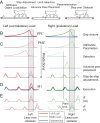
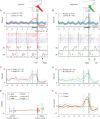
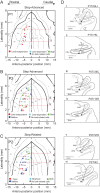

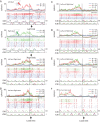
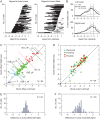

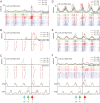
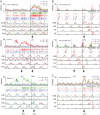
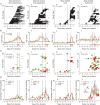
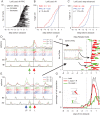
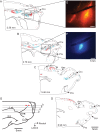
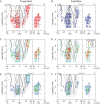
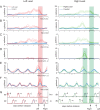

Similar articles
-
Motor cortical activity during voluntary gait modifications in the cat. II. Cells related to the hindlimbs.J Neurophysiol. 1994 Nov;72(5):2070-89. doi: 10.1152/jn.1994.72.5.2070. J Neurophysiol. 1994. PMID: 7884445
-
Two premotor areas (6aα and 6aγ) involved in motor preparation and execution during visually guided locomotion in the cat.Cereb Cortex. 2025 Jul 1;35(7):bhaf159. doi: 10.1093/cercor/bhaf159. Cereb Cortex. 2025. PMID: 40748337 Free PMC article.
-
Motor cortical activity during voluntary gait modifications in the cat. I. Cells related to the forelimbs.J Neurophysiol. 1993 Jul;70(1):179-99. doi: 10.1152/jn.1993.70.1.179. J Neurophysiol. 1993. PMID: 8360715
-
Role of the motor cortex in the control of visually triggered gait modifications.Can J Physiol Pharmacol. 1996 Apr;74(4):426-42. Can J Physiol Pharmacol. 1996. PMID: 8828889 Review.
-
Cortical mechanisms involved in visuomotor coordination during precision walking.Brain Res Rev. 2008 Jan;57(1):199-211. doi: 10.1016/j.brainresrev.2007.07.017. Epub 2007 Aug 22. Brain Res Rev. 2008. PMID: 17935789 Review.
Cited by
-
Neural representation of self-initiated locomotion in the secondary motor cortex of mice across different environmental contexts.Commun Biol. 2025 May 10;8(1):725. doi: 10.1038/s42003-025-08169-7. Commun Biol. 2025. PMID: 40348851 Free PMC article.
-
The Effect of Non-immersive Virtual Reality Exergames Versus Band Stretching on Cardiovascular and Cerebral Hemodynamic Response: A Functional Near-Infrared Spectroscopy Study.Front Hum Neurosci. 2022 Jul 12;16:902757. doi: 10.3389/fnhum.2022.902757. eCollection 2022. Front Hum Neurosci. 2022. PMID: 35903784 Free PMC article.
-
Microstimulation of the Premotor Cortex of the Cat Produces Phase-Dependent Changes in Locomotor Activity.Cereb Cortex. 2021 Oct 22;31(12):5411-5434. doi: 10.1093/cercor/bhab167. Cereb Cortex. 2021. PMID: 34289039 Free PMC article.
-
Exploring the Consistent Roles of Motor Areas Across Voluntary Movement and Locomotion.Neuroscientist. 2025 Jun;31(3):279-295. doi: 10.1177/10738584241263758. Epub 2024 Jul 23. Neuroscientist. 2025. PMID: 39041460 Free PMC article. Review.
-
Dynamics of cortical and corticomuscular connectivity during planning and execution of visually guided steps in humans.Cereb Cortex. 2022 Dec 20;33(2):258-277. doi: 10.1093/cercor/bhac066. Cereb Cortex. 2022. PMID: 35238339 Free PMC article.
References
-
- Andujar J-E, Drew T. 2007. Organization of the projections from the posterior parietal cortex to the rostral and caudal motor cortex of the cat. J Comp Neurol. 504:17–41. - PubMed
-
- Andujar J-E, Lajoie K, Drew T. 2010. A contribution of area 5 of the posterior parietal cortex to the planning of visually guided locomotion: limb-specific and limb-independent effects. J Neurophysiol. 103:986–1006. - PubMed
-
- Aoki S, Sato Y, Yanagihara D. 2013. Lesion in the lateral cerebellum specifically produces overshooting of the toe trajectory in leading forelimb during obstacle avoidance in the rat. J Neurophysiol. 110:1511–1524. - PubMed
-
- Avendaño C, Rausell E, Perez-Aguilar D, Isorna S. 1988. Organization of the association cortical afferent connections of area 5: a retrograde tracer study in the cat. J Comp Neurol. 278:1–33. - PubMed
-
- Avendaño C, Isla AJ, Rausell E. 1992. Area 3a in the cat. II. Projections to the motor cortex and their relations to other corticocortical connections. J Comp Neurol. 321:373–386. - PubMed
Publication types
MeSH terms
LinkOut - more resources
Full Text Sources
Miscellaneous

